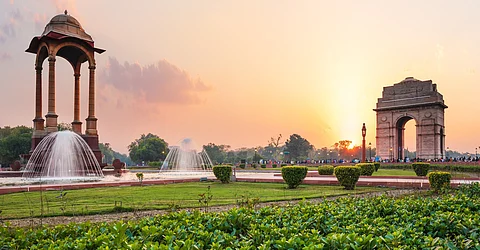

Air pollution and urban heat cancel out 88 per cent of Delhi’s ‘thermally comfortable hours’ in a year, according to a new study conducted by CEPT University, Ahmedabad and Respirer Living Sciences.
While the city of Delhi experiences about 2,210 thermally comfortable hours in a year defined using an outdoor temperature range of 18°C to 31°C—an overwhelming 1,951 of those hours (88 per cent) also coincide with poor air quality (an Air Quality Index above 150), a statement by CEPT noted.
That leaves just 259 hours in a year, or about three per cent of the total annual hours, where residents can enjoy both clean air and comfortable temperatures, conditions necessary for safe and effective natural ventilation.
The situation in Delhi is sharply contrasted with Bengaluru, which reports over 8,100 hours of acceptable air quality and minimal overlap of poor AQI during thermally comfortable periods.
“Ahmedabad, while warmer, also provided more usable outdoor conditions than Delhi. However, Chennai mirrored Delhi’s challenge, with 88 per cent of its comfortable hours also impacted by air pollution, suggesting that the convergence of climate stress and ambient pollution is becoming more common across Indian metros,” according to the statement by CEPT.
How indoor environments are designed and managed should be rethought, the study urged. It added that “conventional building operations—either based on fully sealed air-conditioned spaces or unfiltered natural ventilation—no longer meet the needs of urban India, especially in cities where thermal comfort and clean air rarely overlap”.
The study proposed the integration of Personalised Environmental Control Systems (PECS), which offer localised thermal comfort, filtered ventilation, and occupant-level control. These systems are particularly well-suited for mixed-mode buildings, which switch between natural and mechanical ventilation depending on the time of day, season, and external conditions.
The study also enumerated the advantages of PECS (Ventilation), which it noted “contributed to both short-term and long-term health and energy performance outcomes”.
The modelling conducted by the research team also showed that buildings using PECS can achieve major energy savings for ventilation —72 per cent in Chennai, 70 per cent in Ahmedabad, and 68 per cent in Delhi—when compared to conventional air-conditioned setups.
“PECS work especially well in conjunction with low-energy solutions like ceiling fans and task-based ventilation, which enhance perceived comfort through increased air movement without the energy costs of cooling the entire space,” said Rajan Rawal from CEPT University, an expert in India’s building science sector.
Alongside PECS, the study also vouched for the concept of ‘temporal mixed-mode buildings’, designs that adapt dynamically to outdoor conditions. “These buildings combine sensor-based feedback with intelligent ventilation and filtration strategies, enabling occupants to breathe clean air without unnecessary energy expenditure,” the statement noted.
The researchers called for mainstreaming PECS into building codes, urban planning regulations, and public infrastructure guidelines, especially in high-risk geographies like Delhi and Chennai, given that climate volatility and air pollution continue to rise.
The study was authored by Sathyashriya K, Rajan Rawal, Stuti Banerjee, and Ronak Sutaria. It was presented on June 8, 2025, during the Healthy Building Conference organised by International Society of Indoor Air Quality.